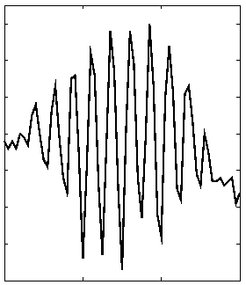
Wittkowski, M., Kervella, P., Arsenault, R., Paresce, F., Beckert, T., Weigelt, G.
VLTI/VINCI observations of the nucleus of NGC 1068 using the adaptive optics system MACAO
Astronomy and Astrophysics, 418, L39(2004)
Abstract
We present the first near-infrared K-band long-baseline interferometric measurement of the nucleus of the prototype Seyfert 2 Galaxy NGC 1068 with resolution 10 mas obtained with the Very Large Telescope Interferometer (VLTI) and the two 8.2 m diameter Unit Telescopes UT 2 and UT 3. The adaptive optics system MACAO (Multi Application Curvature Adaptive Optics) was employed to deliver wavefront-corrected beams to the K-band commissioning instrument VINCI. A squared visibility amplitude of 16.3 4.3% was measured for NGC 1068 at a sky-projected baseline length of 45.8 m and azimuth angle 44.9 deg. This value corresponds to a FWHM of the K-band intensity distribution of 5.0 0.5 mas (0.4 0.04 pc at the distance of NGC 1068) if it consists of a single Gaussian component. Taking into account K-band speckle interferometry observations (Wittkowski et al. 1998; Weinberger et al. 1999; Weigelt et al. 2004), we favor a multi-component model for the intensity distribution where a part of the flux originates from scales clearly smaller than ~5 mas ( 0.4 pc), and another part of the flux from larger scales. The K-band emission from the small ( 5 mas) scales might arise from substructure of the dusty nuclear torus, or directly from the central accretion flow viewed through only moderate extinction.
You can get this publication by following this link to the ADS website
